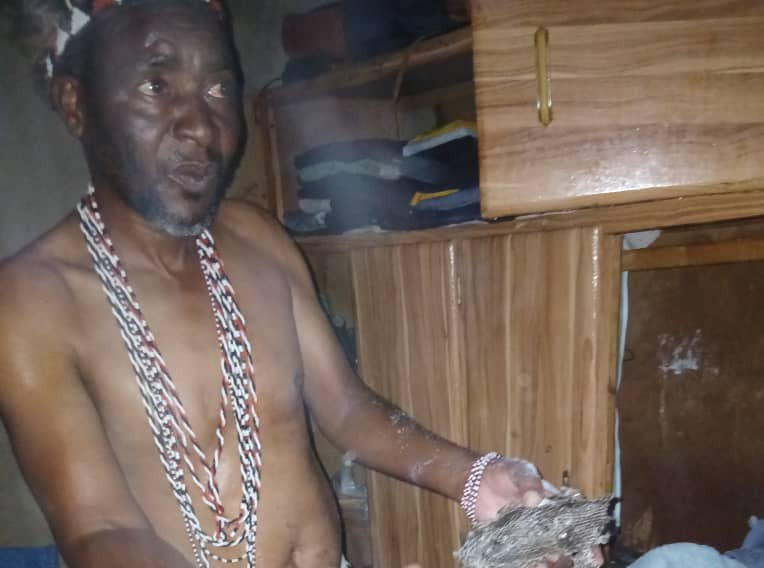
UNITED KINGDOM-based dancehall and reggae disc jockey, singer and producer Daddy Slaggy, formerly Slaggy Yut, who is credited for coining the term ‘Zimdancehall’ has rubbished claims made by Jamaican chanter Beenie Man who said he masterminded the creation of the genre and invented its name.
Beenie Man made the revelations on Radio Jamaica saying his trips to the African continent led to the pioneering of Zimdancehall, a popularly urban music genre which borrows its concepts and origins from Jamaican dancehall.
According to the King of the dancehall chanter, his sojourn in Zimbabwe led him into meeting up with budding artistes who needed guidance on becoming dancehall artistes, but didn’t have the know-how.
Speaking in patois on Radio Jamaica, Beenie Man said he gave guidance to budding artists and coined the genre’s name.
“Zimdancehall, a me meck it enuh. A me meck it. A me name it too — Zimdancehall,” Beenie told host of Radio Jamaica’s Two Live Crew, Dahlia Harris and Christopher “Johnny” Daley.
“Caw mi buck up a whole heap a artiste over deh an dem nuh know weh fi do. Suh wi jus seh ‘studio!’ An wi guh a di studio an wi start mek riddim an seh ‘play dis, play dat’; play dis; guh suh. Guh roun suh. Gimme da base yah; gimme dah keyboard yah.”
Daddy Slaggy said when Beenie Man first visited Zimbabwe the name Zimdancehall had been invented.
“Beenie Man is making those claims yet he only came to Zimbabwe in 2010, for the Castle Lager festival. I was one of the people who was promoting the event on my website www.zimdancehall.com after Mark Redguard linked me up and in return I got exclusive footages courtesy of RawtidTv who travelled with Beenie from Jamaica,” he said.
- Artistes condemn “Operation Dudula’s” xenophobic attack
- Artistes condemn “Operation Dudula’s” xenophobic attack
- Uplifting ghetto youths is our priority: Gyver
- Winky D continues with regional dominance
Keep Reading
“As for Zimdancehall I was a dancehall artist in Zimbabwe in the 90’s with Cruxial Mix Band led by Ras Jabu with Bobo Markos later (3 Wisemen), then early 2000’s I relocated to the UK around Wolverhampton area and that place has so many Jamaicans so I started sending some of our Zimbabwean dancehall songs to the local pirate deejays I knew and most of them were saying it’s not dancehall this is African dancehall, so I decided to create a platform to push our music and that’s when I came up with the website www.zimdancehall.com, which was the first platform where people from all over the world could listen to dancehall music from Zimbabwe,”
“Since in Zimbabwe the internet was still dial-up I had to work with another artist Mar Fisher who was based in Zimbabwe that time. I would send him money to go to all ghettos where he called for songs then put them on a CD in MP3 format and post them then I uploaded them that’s how we worked from 2006 -2010 until the internet situation improved.
“So the other artists like Winky D and King Labash had access to internet. They would just send me their songs directly, then over here in the UK we had artists like Jusa Melvin C, and Kudzi Ku who were also pushing the brand as we did the first Zimdancehall shows in the UK that was what also paved way for the first young artist to come and perform in the UK in 2009 at an event called SAMA Festival and I personally linked the artists Winky D, Sniper, Roki, Mafriq to the promoter of that event Alex Marapara and from then on the dynamics changed it was no longer Tuku, Mukanya and Zhakata in the UK but the young artists whee now flying which was part of our five-year Zim-dancehall plan which also included artists winning the NAMA, getting airplay at that time,” he said.
Sluggy revealed that he was the only one playing Zimdancehall songs for two hours on internet radio, in a move to break away from urban grooves.
Turning back to Beenie Man’s claims, Slaggy said:
“Those are false claims, he is talking as if we didn’t know how to record or produce before he came, and he talks of going in the studio and telling them what to do when he never went into the studio with any ghetto youths.
Artists like Red Rat, Turbulence, and Christopher Martin did more for Zimdancehall and they all recorded with artists in Zimbabwe before Beenie Man came,” he said.
Winky D confirmed Sluggy’s assertion in an interview with Trevor Ncube on In Conversation With Trevor, tracing the genre’s origins back to 2000.
Winky D traced the genre's roots back to 2000-2001 in 2020, with artists like Yapi Banton and Mogo man were experimenting with similar sounds in the 90s, albeit without a specific name.
"When we look at the Zim-dancehall where it started, I will backdate it to around 2000-2001. Before that there were people doing the likes of Yapi Banton, the likes of Mogo man; they did tracks in the 90s, but they had no name, a specific name to give it. They would just call it dancehall as it is called in Jamaica."
Winky D added that the term "Zimdancehall" emerged around the early 2000s when Jusa Dementor, based in the UK, reached out to him in Zimbabwe. Grasping the need for an identity separate from Jamaican Dancehall, Jusa and Slaggy Yut coined the term "Zim-dancehall" to encompass the local style.
Winky D revealed that Jusa Dumentor and Slaggy Yut from ‘3 Wise Men’ played key roles in establishing the term as they began sharing Zimbabwean dancehall music on the website zimdancehall.com in 2004.










